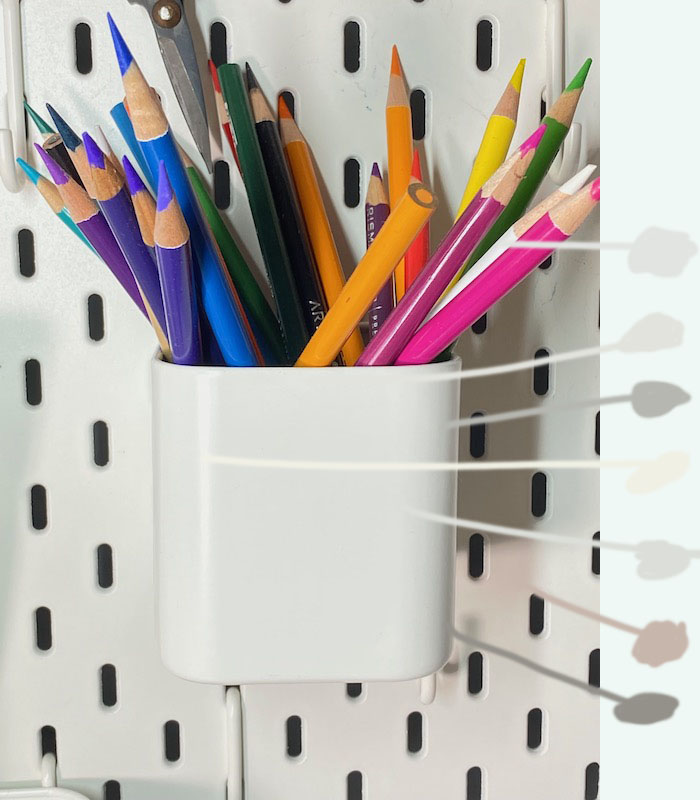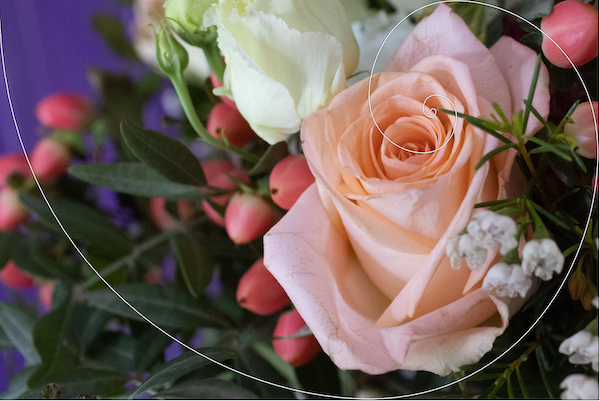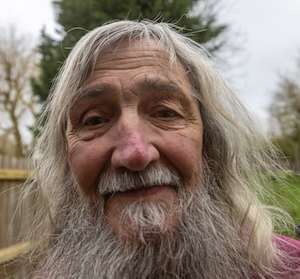- Home
- Planning Your Art
- The grid method
How to draw using the Grid method
Before you can start work with your coloured pencils, you need to get an outline drawing on your paper. There are many methods that artists have used to do this.
If you already have excellent drawing skills, you can do this freehand, although I do suggest not doing this directly onto your final drawing surface. This is because any erasing you do may damage the surface.
The Grid Method
However, if you are not confident in your drawing ability at this stage, there are some methods that can help. The first one we will look at is using the Grid Method is popular with artists who are using a photo reference image.
There is some preparation to do beforehand, which includes printing a copy of your image. Don't worry if your printer can only print on small sheets of paper and you want your drawing to be bigger than this. You can alter the finished size by changing the grid size as described below.
As an example, let's say you want your drawing to be twice the size of your printed photo. You would start by drawing a grid of evenly spaced horizontal and vertical lines, one-half inch apart on top of your photo.
If you feel you will need additional guidance for a particular element, such as an eye, start drawing your grid so that the position of the lines will assist you with drawing this later on. Keep your lines light so you don't obscure any detail in the reference photo.
Then take your drawing paper and draw out a grid of one inch lines (i.e. twice as big) again using a light touch, using a graphite pencil of around HB or F grade. Any harder and the pencil could leave an indented line, any softer and it may smudge.
If you have a light pad, there is a way to speed up this preparation next time, by drawing up your grid on tracing paper and going over it with a black fine tip pen. You can then lay this on top of the light pad, with your drawing paper on top. When you turn on the power, you should see the grid lines through your paper.
Use low tack tape to hold both the gridded paper and your drawing paper together so they do not shift. You can reuse your gridded sheet for future drawings if you look after it.
Sadly, this shortcut won't work for all papers. Some, such as pastelmat, are too thick and not translucent.
There is a similar shortcut for your reference image. You can draw your grid on acetate or an overhead transparency film and then lay this on top of the photo.
With a grid visible on both your photo and your drawing paper, you can start the transfer process. First look at where the edges of shapes appear on the photo and then mark these positions in the relevant square on your drawing. Copy the shapes as accurately as you can. If you struggle with a tricky area, you can draw additional grid lines, breaking the area into smaller squares, on both the drawing and photo.
If you drew your grid directly onto your drawing paper, remember to erase the lines carefully once you have the basic shapes in place ready to begin the colour work.
Digital grid method
If you do not wish to print your image, but have a digital copy on your tablet or phone, you can eliminate the manual task of drawing one grid.
There are apps available that will automatically draw a grid for you, at whatever size you wish. You can then move the photo underneath to line it up where required. You will often also have the facility to change the colour and thickness of the grid lines so they show up well against your photo.
Flag system
Similar to the grid method, however, you draw the guidelines from a centre point, like the rays of the sun. You would take your first two lines from corner to corner and the second set vertically and horizontally through the plotted centre point.
Draw any further lines as needed and then transfer the details across, section by section. The flag still needs to be erased afterwards. I know several artists who use this method, but I can see no advantage over the traditional grid method. It comes down to your preference.
Using a light pad
If you printed your photo on to thin paper, and your drawing paper is translucent enough, you might wish to place both on your light box or pad and draw over the photo directly. You won't improve your drawing skills by using this method, and for some people, it can feel as though it is cheating. Only you can make that decision.
If you don't have a light pad, you can do a similar thing by taping both the photo and drawing to a window on a bright sunny day. For larger drawings, this can make your arm ache as you likely won't have anything to rest it on.
Alternatively, you could resort to good old-fashioned tracing paper.
Projecting your image
Using an art projector to project your image onto your paper is another method you might try. It seems strange at first, but it's an effective way of drawing from a printed image without tracing it. You might find that the technique works better for some subjects than others, but it is worth experimenting with. Try working in a room that is as dark as possible to give you the brightest, sharpest projected image.
Some projectors warn you not to use an actual photo or resin-coated print as your source. This is because of the heat created by the machine, which could damage your original.
A Camera Lucida is an ancient tracing device. It works by projecting the actual image onto a mirror. You then place this mirror above the original image. The projector's beam of light reflects off this mirror and onto your paper. If positioned correctly, you should be able to see a ghosted reflection on your drawing paper, but it is doesn't work for everyone. You may have to sketch the outline of your image two or three times before it's properly traced. The trick is to draw while keeping your hand from obscuring the reflection.
I tried a Camera Lucida app on the iPad, which worked well, although hand positioning was still a problem. It is important to keep the device and your drawing steady so you may need a stand or a tripod for your drawing board.
Plotting points
This method relies on measurement and angles. You may find it quicker than the grid method.
The reference should be the same size as your worked picture or a simple arithmetic variation (twice the size - half the size etc). You draw a frame of the correct size on your working surface. Then measure a point where a key feature crosses the reference frame and make a suitable mark on your working frame. By measuring angles and distances, you can transfer enough detail across to enable you to do a satisfactory freehand drawing between the plotted points.
Sketched points
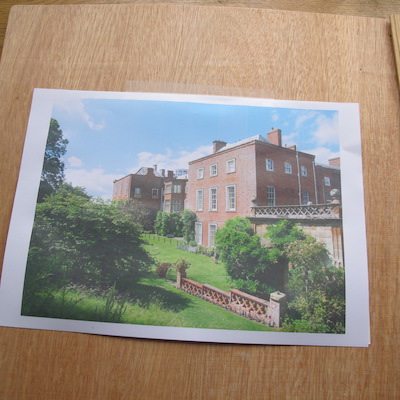
This is much easier to show than to explain! This is a quick method to use where you will want to do most of the drawing yourself and simply want a guide to the overall position of important points to get sizes and angles correct.
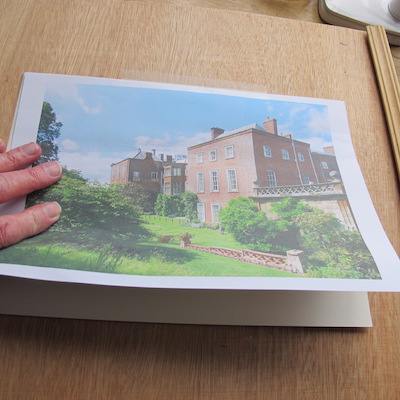
Print the reference out on fairly thin paper. For the example shown here, I used 90gsm printer paper, but so long as the paper is thin enough to see through against the light, the system will work.

With the reference positioned over the drawing paper and the light coming from in front of me, I can see the image through the paper when I fold it back.
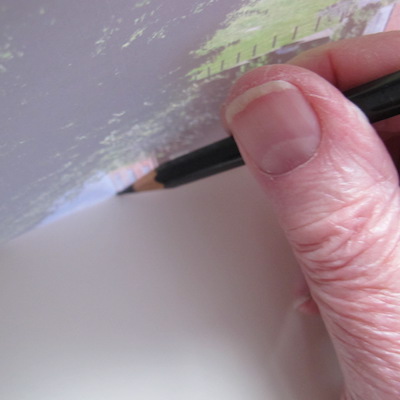
If I fold the paper over close to the point I want to plot, I can match the image from the reference and make a mark on my drawing paper.
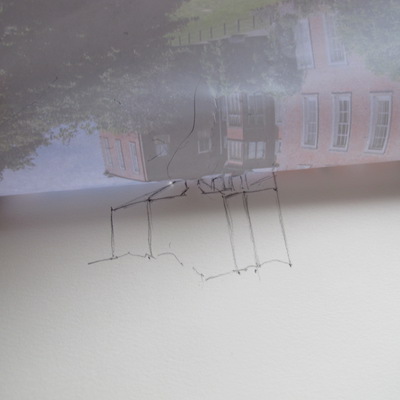
By taking a succession of points, I can quickly mark out the overall shape of the essential parts of the picture and then fill in the detail direct from the reference later.
The advantage over tracing is that it is one-step process and there is no line indentation (so long as you are careful when drawing your points) it mangles the reference a bit, but not so that it is impossible to use afterwards.
In summary
Drawing is a journey of discovery, and the methods you've just explored are your roadmap. The grid method, digital grid, flag system, light pad usage, projection, Camera Lucida, plotting points, and sketching points - these are all tools in your artistic toolkit, each with its unique strengths and applications.
Your creativity is boundless, and these techniques are simply stepping stones on your path to artistic excellence. Experiment with them, refine them, and make them your own. Remember, there is no right or wrong in art, only progress.
Whether you're a seasoned artist looking for new techniques or a beginner just starting out, don't be afraid to step out of your comfort zone. Try a new method. Challenge yourself. Each stroke, each line, each shape you draw brings you one step closer to mastering your craft.
The power to create beautiful art is in your hands. So pick up your pencil, set out your paper, and let your creativity flow. Your artistic journey begins now. And remember, the only mistake in art is the one not made. So go ahead, make your mark on the world. Draw, create, inspire.
